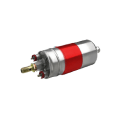Exploring the Magic of Car Emission Control: The Charcoal Canister
In the world of cars, a little-known hero is helping to keep our air clean by trapping harmful vapors before they escape into the sky - it's called the charcoal canister. It's a small part of your car's emissions control system that plays a big role in reducing pollution. Let's take a closer look at what the charcoal canister does, how it works, and why it's so important for the environment.
What is a Charcoal Canister
The charcoal canister, also referred to as an EVAP canister (an abbreviation for evaporative emissions control canister), plays a crucial role in the modern vehicle's Evaporative Emissions Control (EVAP) system. Its main task is to capture and retain fuel vapor that might otherwise seep into the environment, adding to air pollution. These vapors are later reintroduced to the engine, where they are burned during combustion, effectively reducing the vehicle's emissions.
How Does It Work?
The functionality of a charcoal canister is remarkably straightforward yet remarkably powerful. Enclosed within a plastic or metal casing, it contains activated charcoal—a specially treated, highly porous form of carbon. This porous structure grants the charcoal an expansive surface area, enabling it to efficiently capture and retain considerable quantities of fuel vapors.
The EVAP system utilizes a network of valves and hoses to guide fuel vapor movement from the fuel tank, through the canister, and ultimately back to the combustion chamber. Below is a detailed breakdown of the procedure:
Capture: Fuel vapors, generated as fuel heats up and agitates within the gas tank, are routed to the EVAP canister via a purge valve usually situated in the engine bay.
Storage: The activated charcoal inside the canister absorbs and holds onto the fuel vapors. This storage helps maintain a proper balance in the system, ensuring that the engine receives just the right amount of vapor-filled air needed for combustion.
Purge: During operation, when the engine is running, the purge valve opens up. This enables the fuel vapors to be pulled into the engine's intake manifold. Within the manifold, the vapors mix with the air and are then ignited, concluding the combustion process.
Recycle: The purging, drawing, and combustion process guarantees that the fuel vapor, a major emissions source, gets recycled rather than being discharged into the environment.
The Importance of the Charcoal Canister
Efficient control of evaporative emissions, such as that facilitated by the charcoal canister, plays a vital role in determining a vehicle's environmental footprint. Vehicles rank prominently among the contributors to volatile organic compound (VOC) emissions, which significantly contribute to the creation of ground-level ozone and smog, thereby exacerbating respiratory problems and other health-related concerns.
By integrating the EVAP system with a charcoal canister, manufacturers actively decrease these emissions, resulting in newer vehicles emitting less pollution. In certain areas, such emissions control isn't just commendable; it's mandatory. Vehicles must undergo periodic inspections to verify the functionality of their EVAP systems, which includes ensuring the charcoal canister is working correctly.
Maintenance and Signs of a Failing Charcoal Canister
With time and usage, charcoal canisters may become clogged, develop leaks, or sustain damage, affecting their effectiveness and causing emissions to rise. Common indications of a failing canister include the check engine light coming on, a smell of fuel from the vehicle's exhaust, or performance problems due to an overly rich fuel-air mixture.
Regular inspections and scheduled maintenance are essential for ensuring that the charcoal canister operates effectively throughout the vehicle's lifespan. If you suspect any issues with your EVAP system, it's crucial to have a professional examine it to determine whether the charcoal canister or any other EVAP system components need maintenance or replacement.
Conclusion
While the charcoal canister may not receive much attention among vehicle components, its significance as an environmental protector should not be overlooked. As modern vehicles strive for greater fuel efficiency and environmental compliance, technologies like the EVAP system, including its charcoal canister, underscore the vital role even the smallest components play in our quest to minimize our ecological impact. With every mile traveled, the humble charcoal canister and its associated systems work diligently to ensure that our engines are not only powerful but also conscientious guardians of our planet's well-being.
How can we help?
Instant Car Fix's mobile mechanic service offers convenient solutions for diagnosing and replacing charcoal canisters. With our mobile mechanics, you can schedule an appointment at your preferred location, whether it's at home, work, or roadside. Our experienced technicians will arrive equipped with the necessary tools and expertise to conduct a thorough diagnosis of your vehicle's EVAP system, including the charcoal canister.
If a replacement is needed, our mobile mechanics can efficiently remove the old charcoal canister and install a new one on-site. We understand the importance of a properly functioning emissions control system, and our team is committed to ensuring that your vehicle meets environmental standards while running smoothly.
With Instant Car Fix's mobile mechanic service, you can avoid the hassle of towing your vehicle to a repair shop and waiting for days to get it fixed. Instead, our technicians will come to you, saving you time and providing convenient solutions for your automotive needs.
Verified
Verified

Verified
Verified
Verified































